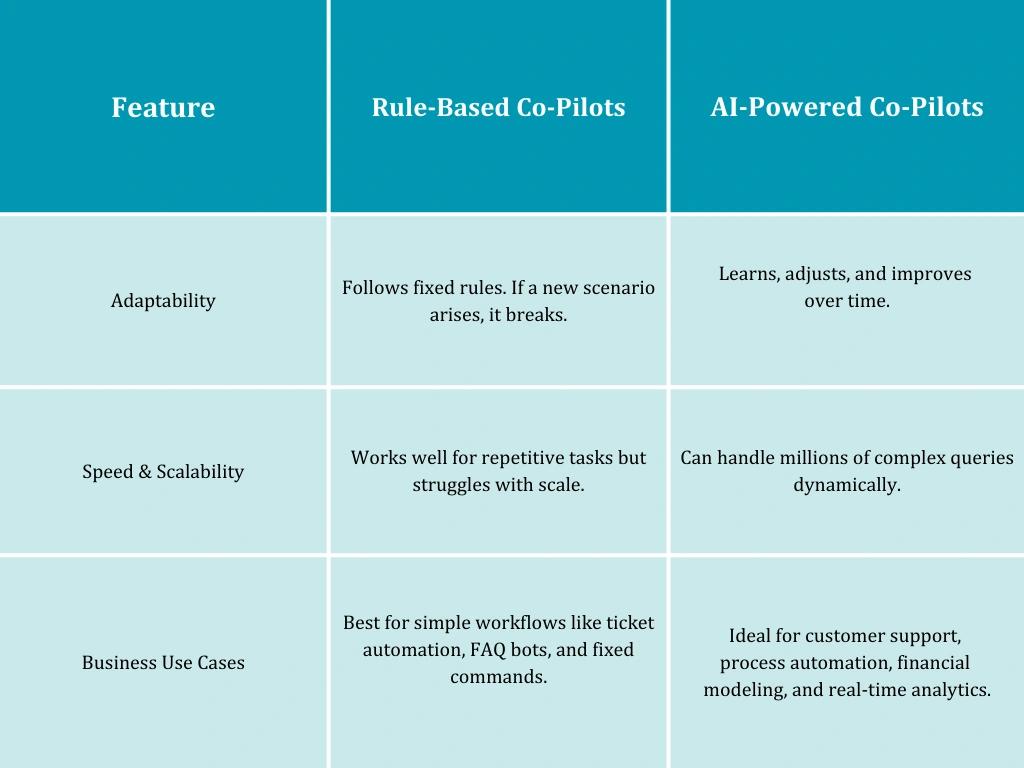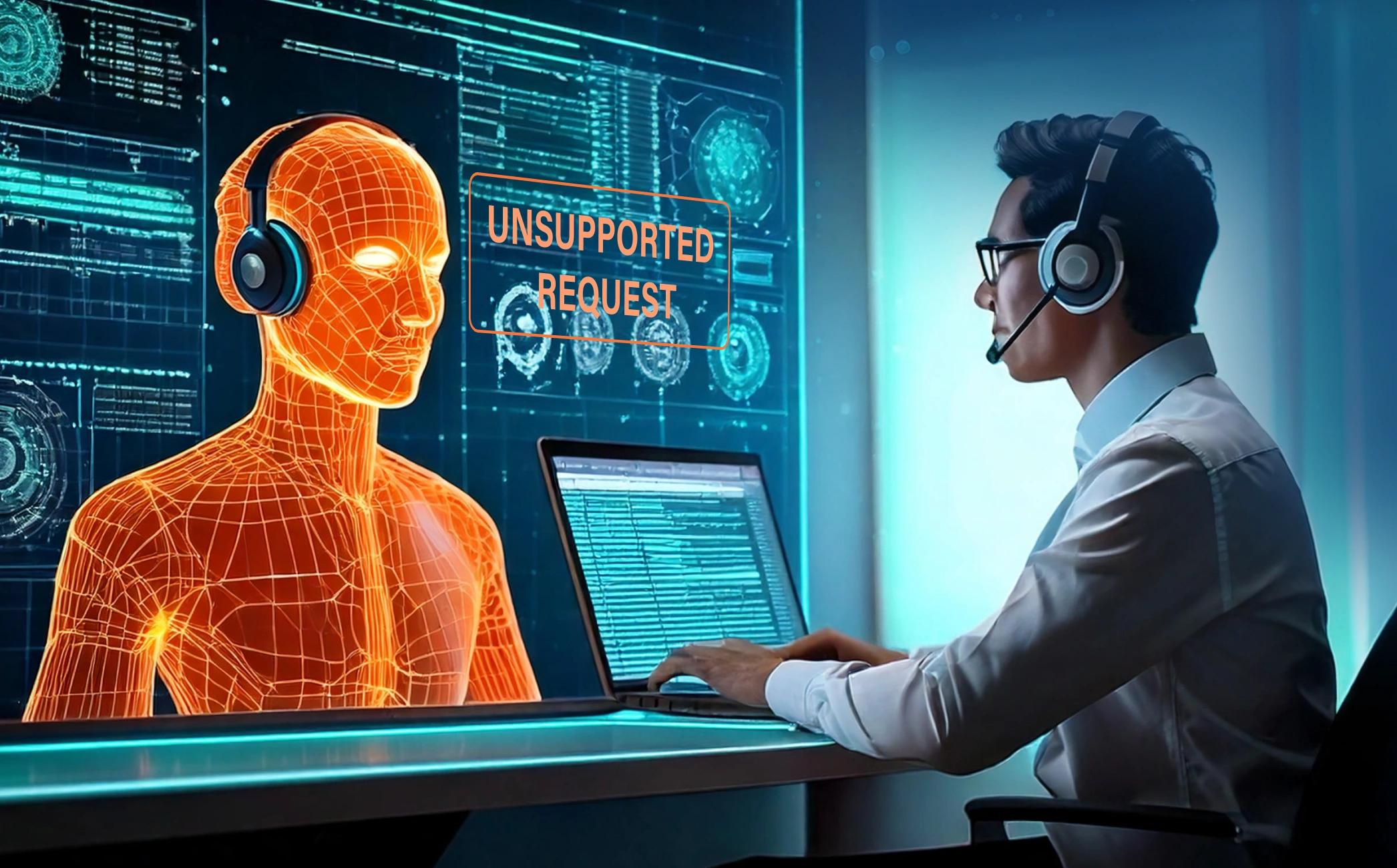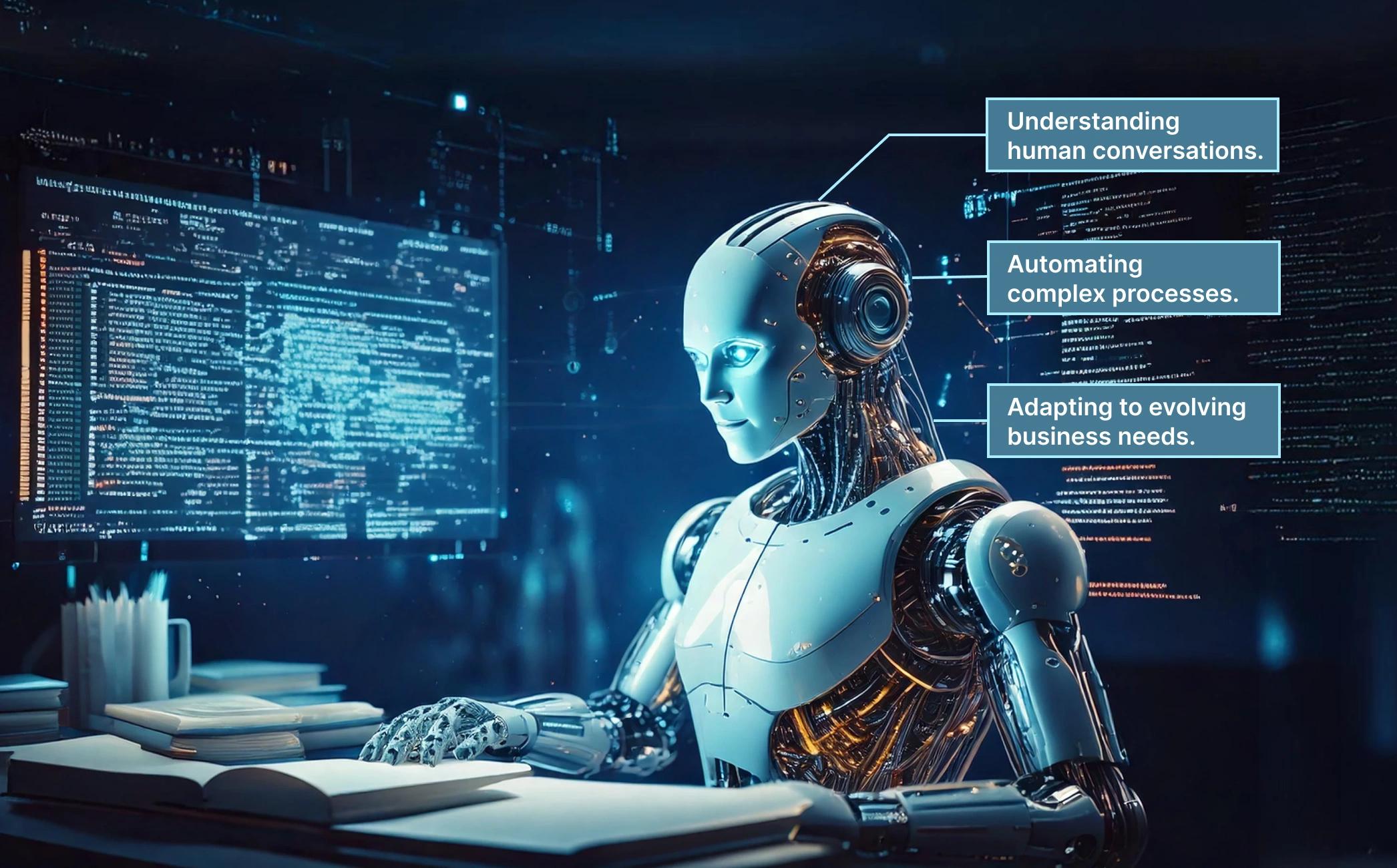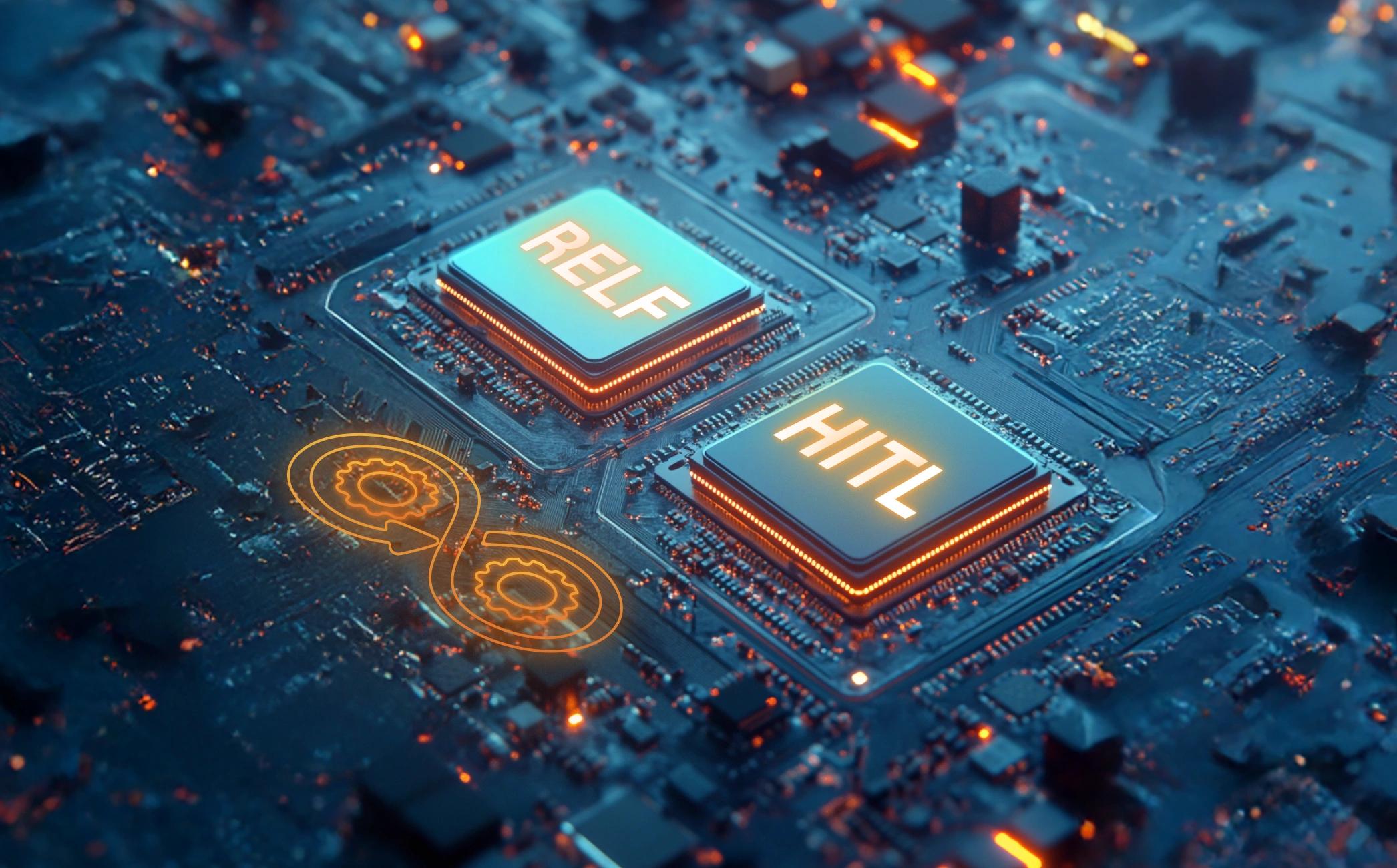"Autopilot engaged" But really?
In the cockpit of modern business, there's a critical choice to make. A rule-based automation co-pilot operates like a traditional autopilot, following pre-programmed paths with rigid precision. An AI-powered co-pilot functions more like an experienced pilot, making real-time adjustments based on changing conditions, from turbulence to unexpected weather patterns.
Your business operations deserve the same level of sophistication. So the task at hand is to choose which co-pilot should be at your controls.
When to Choose What?

When to Choose What?
Reliable But Limited
Here’s an analogy to understand a rule-based co-pilot better. A traditional traffic light system works perfectly as long as everyone follows the rules. However, in case of an unexpected event or an emergency, it doesn’t adapt. That’s how rule-based co-pilots work.
These systems operate on predefined "if-then" rules. Meaning they function well within their programmed scenarios but fail when faced with unexpected situations.
But Rule-Based Co-Pilots Are Not Completely Irrelevant Afterall
Here’s where they shine :
- Simple and repetitive workflows, such as password reset bots.
- Call center IVR systems (Press 1 for X, Press 2 for Y…).
- Predefined decision trees for structured processes like tax calculations.
Where They Fall Short
- Struggles with handling exceptions; if the input varies slightly, it breaks.
- Lacks learning capabilities; it doesn’t improve unless manually updated.
- Can’t analyze data patterns or predict user needs.

A reliable Rule-Based Co-Pilot failing at unexpected commands.
The Airline Customer Service Nightmare
Ever called an airline's automated support line only to get stuck in a loop of repetitive responses? That’s a rule-based system failing. It cannot process real human concerns or adapt to unexpected customer requests. This is where AI-powered co-pilots come in.
AI-Powered Co-Pilots – Smart, Scalable & Future-Ready
An AI-powered co-pilot is like a seasoned air traffic controller that learns from experience, adapts to new situations, and optimizes efficiency over time.
Unlike rule-based systems, AI-powered co-pilots use machine learning, natural language processing (NLP), and deep learning to continuously improve performance. They don’t just react, they anticipate possible scenarios.
Where AI-Powered Co-Pilots Excel
- Understanding human conversations and responding contextually.
- Automating complex processes, reducing human intervention.
Adapting to evolving business needs without requiring manual reprogramming.

AI-powered co-pilots continuously deep learning to improve performance.
Where AI Co-Pilots Are Making an Impact
Customer Support : AI-driven chatbots provide personalized responses, understand customer sentiment, and improve user satisfaction. Unlike rule-based chatbots, which rely on predefined scripts, AI chatbots analyze previous conversations, making responses more relevant.

Fraud Detection : AI-powered co-pilots in banking and finance detect fraudulent transactions in real-time. Instead of relying on rigid rule-based detection, AI models analyze behavioral patterns and adapt to emerging threats.

Healthcare : AI assistants analyze patient symptoms, recommend diagnoses, and assist doctors in treatment planning. These co-pilots continuously learn from new cases, refining their diagnostic accuracy over time.

Software Development : AI-powered coding assistants, like GitHub Copilot, help developers by suggesting optimized code snippets, identifying errors, and improving efficiency. Unlike rule-based automation tools, which follow strict templates, AI co-pilots adapt to different coding styles.

The Role of Human-in-the-Loop in AI-Powered Co-Pilots
One major concern with AI systems is their unpredictability. This is where Human-in-the-Loop (HITL) and Reinforcement Learning Expert Feedback (RLEF) play a crucial role.
HITL ensures that AI systems align with human values by keeping human oversight in critical decision-making processes. Instead of an AI co-pilot making independent decisions, experts validate and refine the AI’s outputs, ensuring reliability.
At Techolution, we integrate RLEF into AI co-pilot solutions, enabling them to learn from domain experts while avoiding automation pitfalls.

HILT and RLEF playing crucial roles in AI Powered Co-Pilots.
The Future of Co-Pilots
Would you rather :
- Keep manually updating workflows every time business needs evolve?
- Have an AI-powered co-pilot that learns and optimizes itself over time?

The reality is, AI-powered co-pilots are here to stay. Businesses that embrace AI-driven automation will experience increased efficiency, cost savings, and better customer engagement. Those who resist may find themselves stuck in outdated processes that require constant manual intervention.
Which Co-Pilot is Right for Your Business?
The choice depends on your business needs
- If you require a basic, rule-following system with no learning curve, a rule-based co-pilot may be enough.
- If you need a scalable, intelligent system that can adapt and improve, an AI-powered co-pilot is the better investment.
At Techolution, we specialize in building curated AI-powered solutions tailored to your business needs. Whether you're automating workflows, improving customer service, or driving efficiency, we ensure AI works for you.
Let’s help you future-proof your operations? Build your AI co-pilot today.
Frequently Asked Questions (FAQs)
1. What’s the primary difference between a rule-based co-pilot and an AI-powered co-pilot?
A rule-based co-pilot follows predefined "if-then" rules and works for repetitive tasks. An AI-powered co-pilot learns, adapts, and optimizes workflows using machine learning.
2. When should I choose a rule-based co-pilot?
Use a rule-based co-pilot for simple, repetitive tasks like password resets, IVR systems, or tax calculations where no learning is required.
3. How does an AI-powered co-pilot improve business efficiency?
AI co-pilots analyze data, predict outcomes, and automate complex tasks, reducing human intervention and improving customer experiences.
4. Which industries benefit the most from AI-powered co-pilots?
AI-powered co-pilots are used in customer support, finance (fraud detection), healthcare (diagnostics), and software development (coding assistants).
5. Is AI-powered automation expensive?
Costs vary, but cloud-based AI solutions are scalable and cost-effective, offering long-term savings through efficiency and automation.





